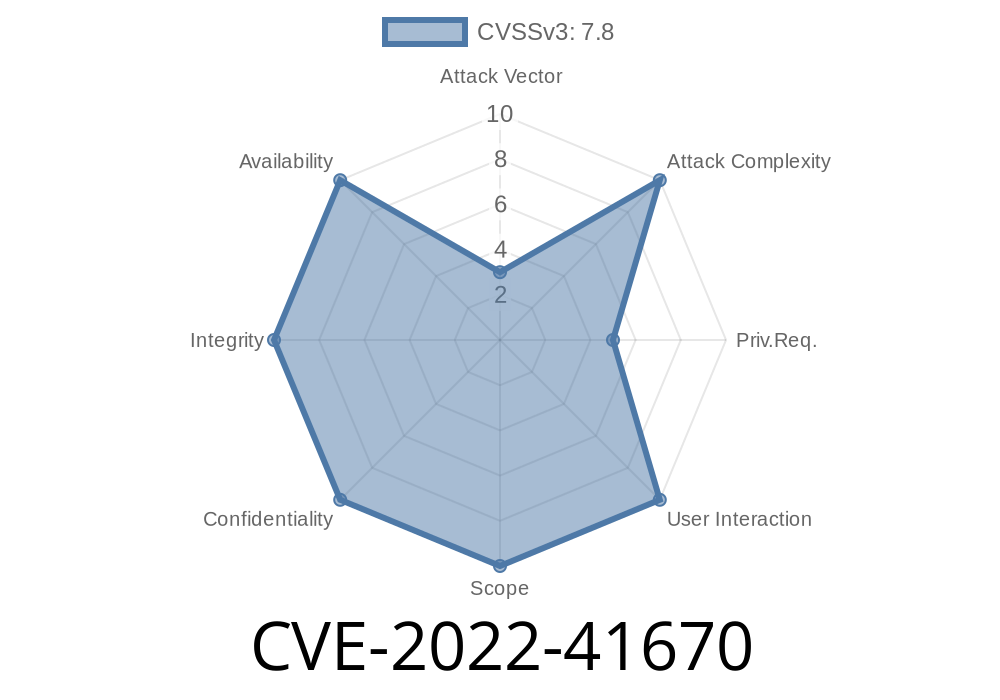A recently discovered vulnerability, identified as CVE-2022-41670, is linked to a CWE-22 category issue: Improper Limitation of a Pathname to a Restricted Directory ('Path Traversal'). The vulnerability has been found within the SGIUtility component of the affected products, EcoStruxure Operator Terminal Expert (V3.3 Hotfix 1 or prior) and Pro-face BLUE (V3.3 Hotfix1 or prior). It can allow adversaries to exploit the vulnerability and load a malicious DLL, which could potentially lead to the execution of harmful code.
Details
The CVE-2022-41670 vulnerability is a result of the improper limitation of a pathname to a restricted directory (Path Traversal) within the SGIUtility component. This component is present in both the EcoStruxure Operator Terminal Expert and Pro-face BLUE products.
An attacker with local user privileges could exploit this vulnerability by loading a malicious Dynamic Link Library (DLL) file. DLL files contain executable code and resources that can be called upon by other applications. In this particular case, loading the malicious DLL may lead to the execution of harmful code.
To better understand and demonstrate the exploit, consider the following code snippet
#include <windows.h>
BOOL APIENTRY DllMain(HMODULE hModule, DWORD ul_reason_for_call, LPVOID lpReserved) {
switch (ul_reason_for_call) {
case DLL_PROCESS_ATTACH:
MessageBox(, "Malicious DLL loaded!", "Vulnerability Exploited", MB_OK);
break;
// Handle other DLL events here...
}
return TRUE;
}
This is a sample DLL file containing malicious code that will display a message box when loaded. An attacker could modify this file and implement their own malicious code, that when loaded successfully, would execute within the affected software environment.
Links to Original References
1. CWE-22 - Improper Limitation of a Pathname to a Restricted Directory ('Path Traversal'): https://cwe.mitre.org/data/definitions/22.html
2. CVE-2022-41670 - EcoStruxure Operator Terminal Expert and Pro-face BLUE path traversal vulnerability: https://cve.mitre.org/cgi-bin/cvename.cgi?name=CVE-2022-41670
Mitigation
To safeguard against this vulnerability, users of EcoStruxure Operator Terminal Expert and Pro-face BLUE products are advised to follow the recommendations provided by the vendors:
Update to the latest version of the software as soon as possible.
2. Restrict local user privileges, especially write permissions in the affected directories, to ensure that malicious DLL files cannot be loaded without proper authorization.
In conclusion, CVE-2022-41670 is a significant threat to users of the affected products, due to its potential to allow execution of harmful code. By following the mitigation steps, administrators can help reduce the risk of exploitation and ensure a more secure software environment.
Timeline
Published on: 11/04/2022 14:15:00 UTC
Last modified on: 11/08/2022 16:20:00 UTC
